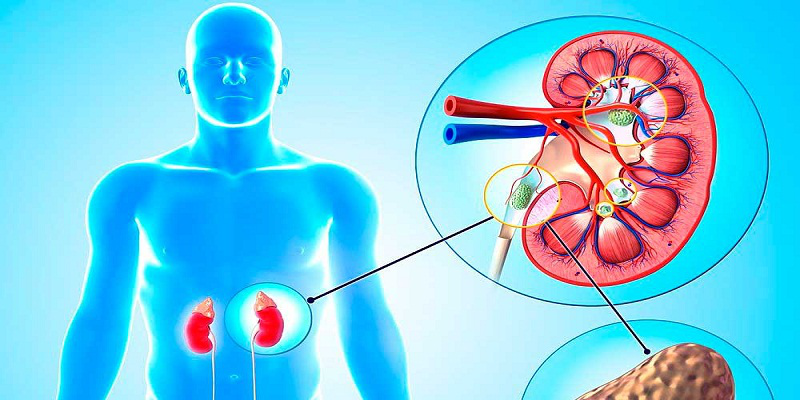Kidney stones can be prevented from occurring in the first place if individuals tend to give up their sedentary lifestyle and focus on more healthy living.
A kidney stone is one of the most painful urologic disorders that have besotted humans for centuries. Kidneys play a crucial role in filtering out the toxins from our blood and excreting them in the form of urine. The waste collected is mixed with water to form urine. However, when the body is dehydrated, the urine becomes concentrated leading the salts and minerals to accumulate in the kidneys. These minerals get hardened with time and form crystalline structures known as the kidney stones. In general, Kidney stone treatment usually involves home remedies and lifestyle changes. However, if the stones get bigger, medical interventions may be required including surgery.

Symptoms of Kidney Stones:
- Blood in urine
- Frequent urge to urinate
- Fever, sweating, and shivers
- Cloudy urine and bad smelling urine
- Back pain
Kidney Stone Removal:
In the earlier days, open surgery was necessary for removing large stones followed by 5-6 weeks of recovery time. It was painful and time-consuming. Today, with the advancement in technology and medical science, treatment for large kidney stones is greatly improved. Most of the options today do not require major surgical interventions and can be performed in an outpatient setting.
Extracorporeal Shock Wave Lithotripsy-
Extracorporeal Shock Wave Lithotripsy (ESWL) is the most frequently Kidney stone treatment procedure for treating large stones. The procedure includes the use of shock waves for breaking denser stones into smaller ones that later can be passed through urine. It is a non-invasive medical intervention where shock waves are created outside the body that travels through the skin and muscles until it hit the stones.
The doctors use ultrasound or x-rays for pinpointing the stones during the treatment. However, the procedure is carried out under general anesthesia. It can be done on an outpatient basis and the recovery period is relatively short. Patients can return to their normal lifestyle within few days post-treatment.
Complications may occur with this procedure given that denser stones were shattered into small pieces. There is a possibility that the stones may not exit the urinary tract as quickly as thought. It can lead to complications like blood in the urine, back pain, and abdominal pain, etc. This is the reason why the doctors prescribe certain medications and home remedies post-treatment for dissolving the stones.
Also Read: kidney stone removal: a modern method for treating painful scourge
Percutaneous Nephrolithotomy:
Sometimes the urologist prefers a procedure called Percutaneous Nephrolithotomy over ESWL if the stone is quite large than expected. It is a minimally invasive medical intervention that generally requires a small incision. The procedure is followed when the location of the stone does not allow effective use of shock waves or when the stones are quite larger.
The surgeon makes a small incision at the back and creates a direct tunnel to the kidney. An instrument called nephroscope is used for the procedure that locates and removes large stones. Electrohydraulic or ultrasonic energy probes are also used for breaking the large stones into small pieces.
The patient is required to stay at the hospital for several days post treatment and may have a small tube called nephrostomy left in his/her kidney during the healing process. What gives Percutaneous Nephrolithotomy an edge over ESWL is that the surgeon can remove most of the stone fragments directly instead of only relying on waiting for the stones to get dissolved and exit through urine.
